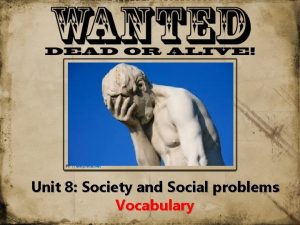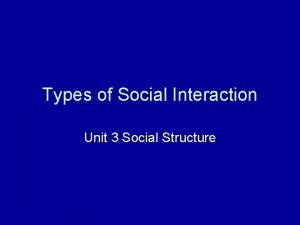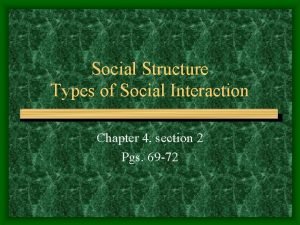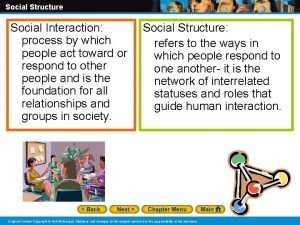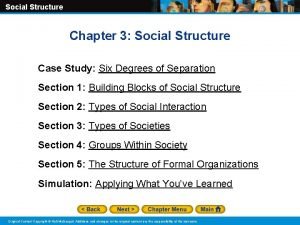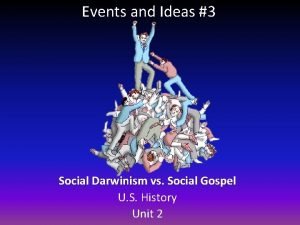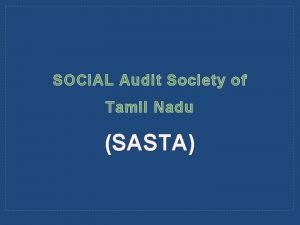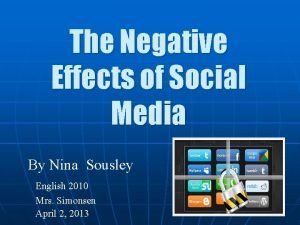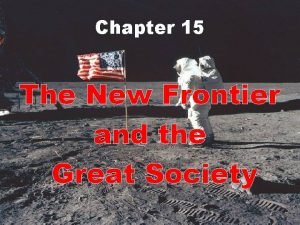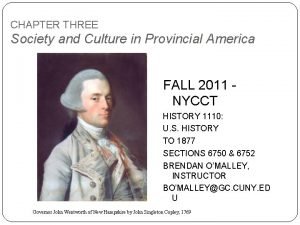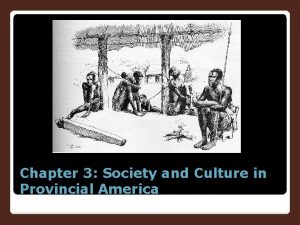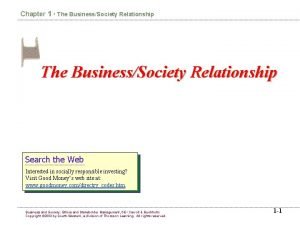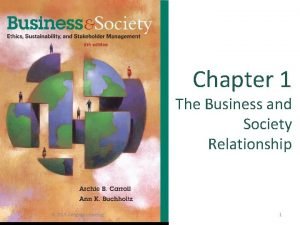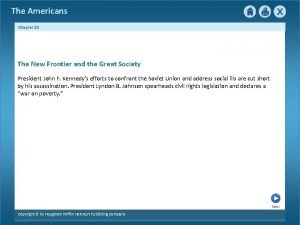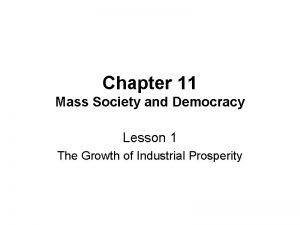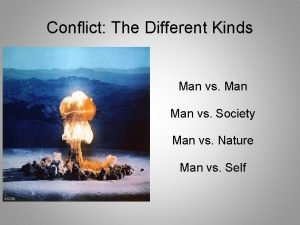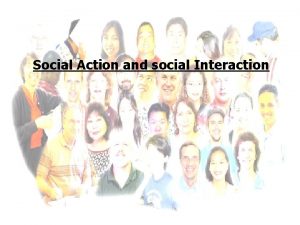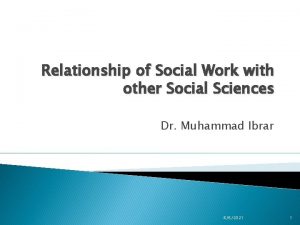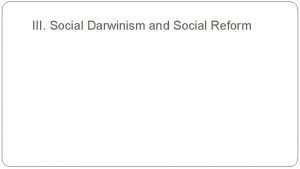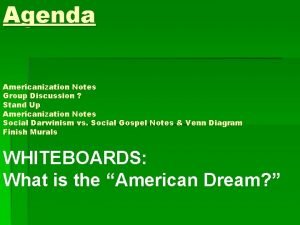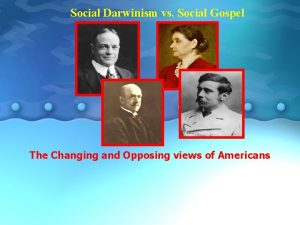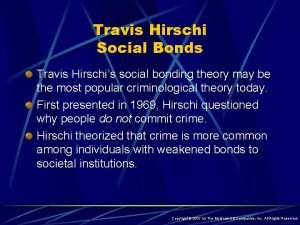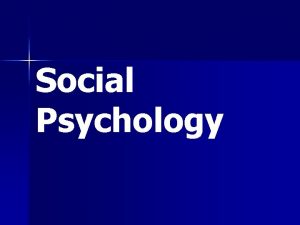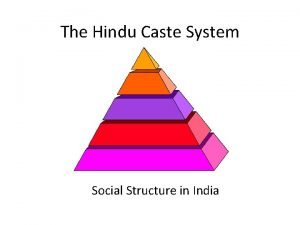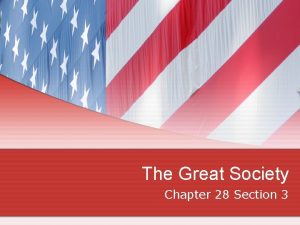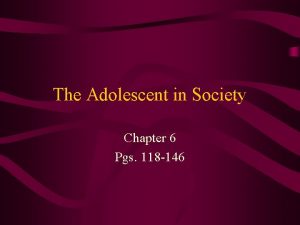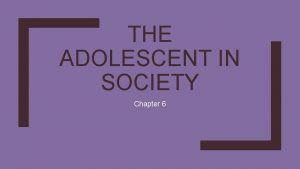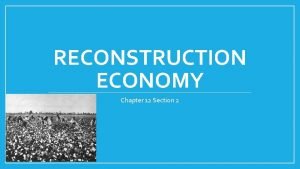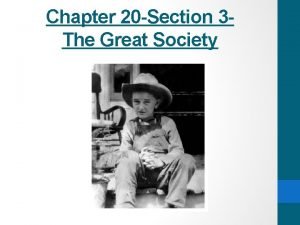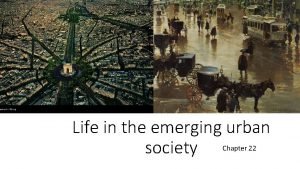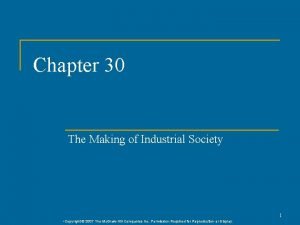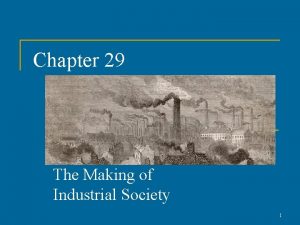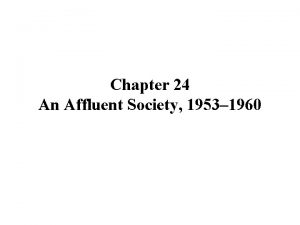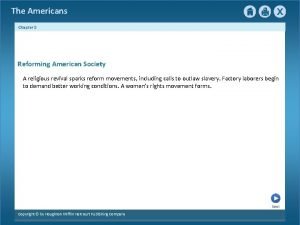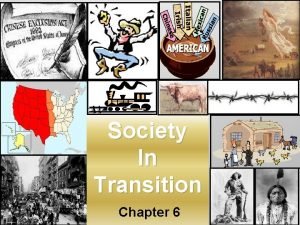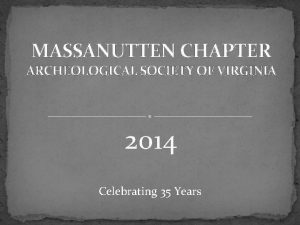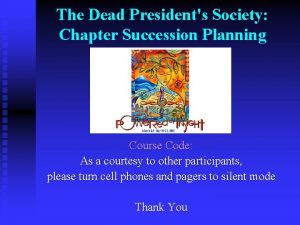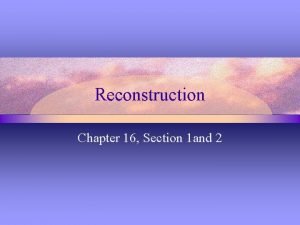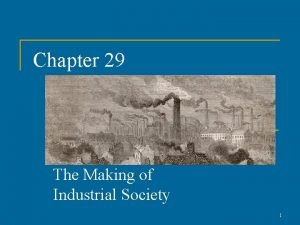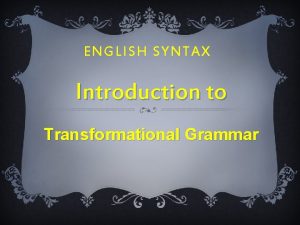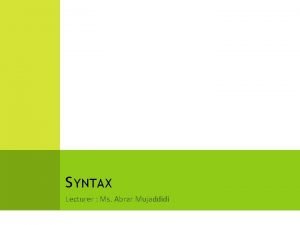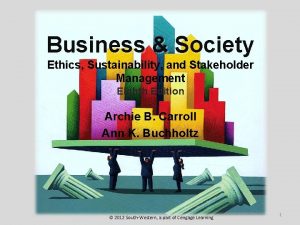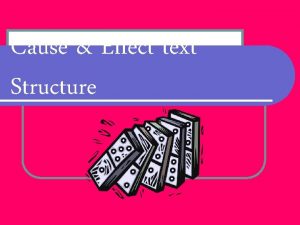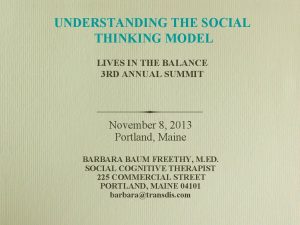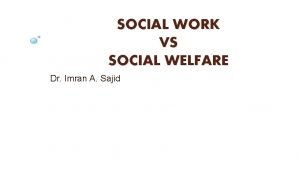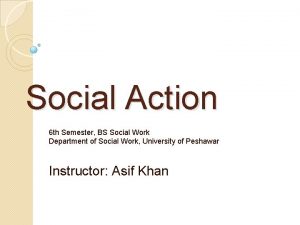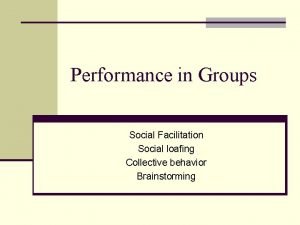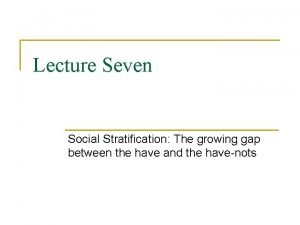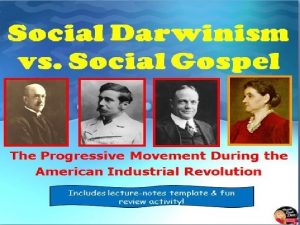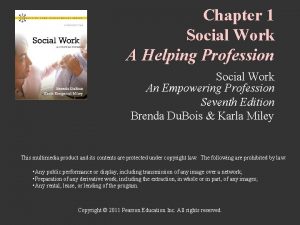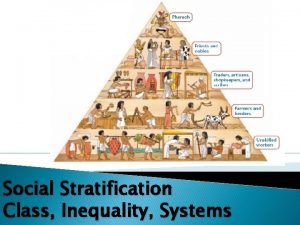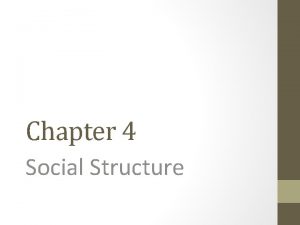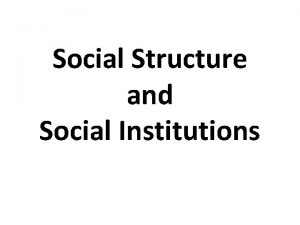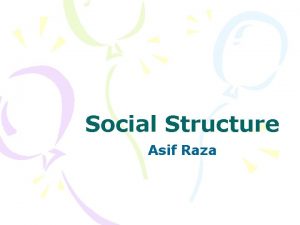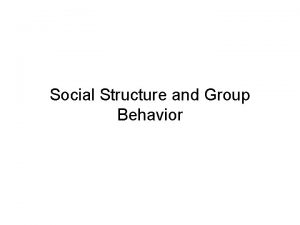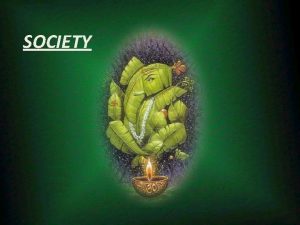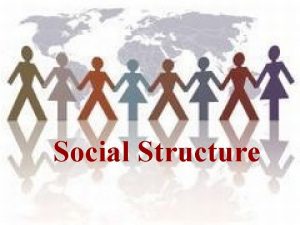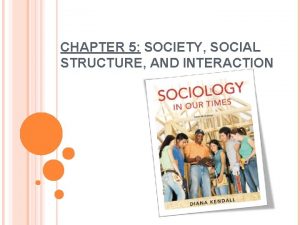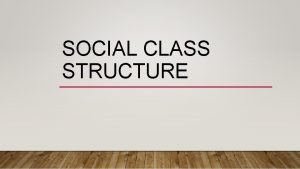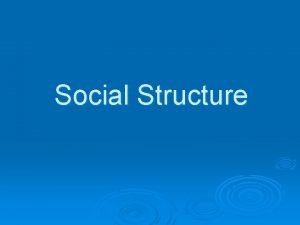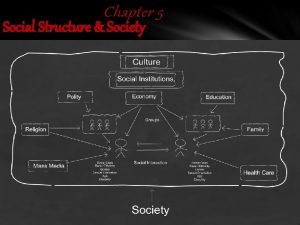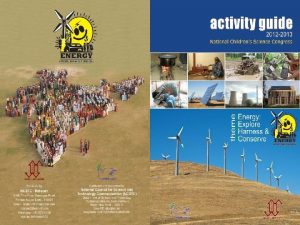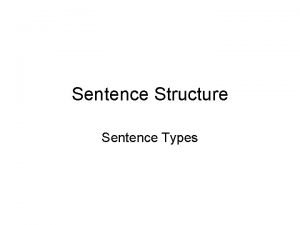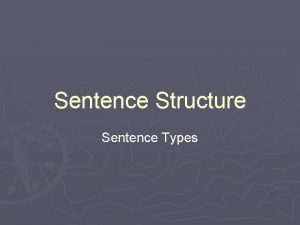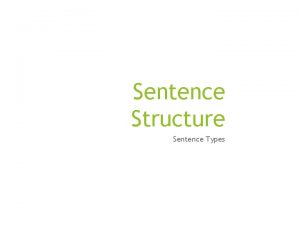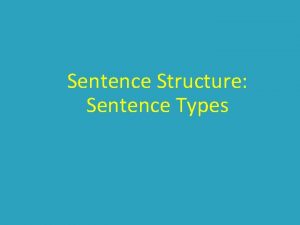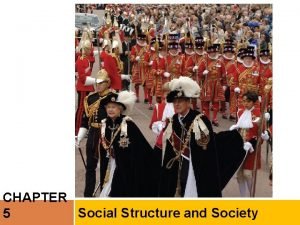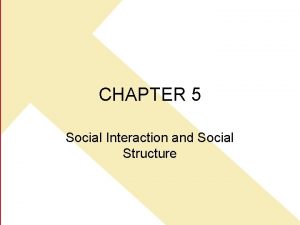Social Structure and Society Chapter 4 Types of












































![Theories of Deviance #4 Cultural Transmission theory [Interactionist]– based on socialization and sees – Theories of Deviance #4 Cultural Transmission theory [Interactionist]– based on socialization and sees –](https://slidetodoc.com/presentation_image_h/22601159a94534b11a6cbcd299c7f41c/image-45.jpg)

























- Slides: 70

Social Structure and Society Chapter 4


Types of Statuses

Rights and Obligations Rights: A behavior that individuals can expect from others Obligations: A behavior that individuals are expected to perform towards others

Role Strain vs. Role Conflict

Deviance and Social Control Chapter 7

Objectives: Section 1: Deviance • Define deviance • Explain the nature and social functions of deviance. • Compare theories that have been proposed to explain deviance. 7

Read the following behaviors • Continuously talking to oneself in public • Drag racing on a public street or highway • Regularly using illegal drugs • A man wearing woman’s clothing • Attacking another person with a weapon What do they all have in common? 8

Deviance • Most people internalize the majority of the norms in their societies, but may not internalize all the norms and so there isn’t total social control • There always people who break the rules of a society • Behavior that violates significant social norms is called deviance 9

Nature of Deviance • Because there are so many norms governing behavior, occasional violations are unavoidable • What is considered deviant varies from society to society… – society determines what is deviant – Society determines the consequences for deviant behavior 10

How does a person come to be considered a deviant? 1. people are considered deviant for repeat behavior • • So if they once get a ticket for driving their car too fast…that is not deviant If they continue to be caught driving at high speeds and have reputation of a reckless driver, then called a deviant 2. commits an act that has serious negative consequences for society • i. e. rape, murder, sexual assault, robbery 11

How do we know something is deviant? Labeling deviance has 2 components: to be considered deviant by society, an individual must first be detected committing a deviant act, behavior is known to others the individual must be stigmatized by society ▪ stigma – mark of social disgrace that sets the deviant apart from the rest of society ▪ Cut/burn marks on person, public punishments, executions, imprisonment, cut direct , spoiled reputation What is considered deviant varies from society to society and during different time periods 12

Social Functions of Deviance Emile Durkheim’s The Rules of Sociological Method observed that deviance has some uses in social life. 1. Unifying the Group – serves to draw the line between conforming members of society and “outsiders” – the nonconforming members 2. Clarifying Norms – defines the boundaries of acceptable behavior 3. Diffusing Tension – acts that allow individuals to relieve tension without disrupting the basic fabric of society 13

Social Functions of Deviance 4. Promoting Social Change – can help prompt social change by identifying problem areas (continued) 5. Providing Jobs – provides legitimate jobs for a wide range of people judges, lawyers, police officers, prison personnel, parole officers, crime reporters criminologists – social scientists who study criminal behavior 14

15

DEVIANCEBEHAVIOR THAT DEPARTS FROM SOCIETAL OR GROUP NORMS

SOCIAL EXPECTATIONS MEDIA EXPECTS FIT AND TONE

POSITIVE DEVIANCE BEHAVIOR THAT OVER CONFORMS TO SOCIAL EXPECTATIONS Steroids is over conforming Anorexia and bodybuilding is over conforming

NEGATIVE DEVIANCE BEHAVIOR THAT UNDER CONFORMS TO SOCIAL EXPECTATIONS Obesity is under conforming

ROBERT MERTON’S STRAIN THEORY • Theory that deviance is more likely to occur when a gap exists between cultural goals and the ability to achieve these goals by legitimate means.

ROBERT MERTON’S STRAIN THEORY • If US Cultural Goals = success and materialism • And Means of Achievement = education and hard work • Conformity is when you accept the goals and the means to achieve it.


ROBERT MERTON’S STRAIN THEORY • • Innovation-individual accepts the goal of success but uses illegal means to get it. (drug dealing) Ritualism-the individual rejects the goal but continues to use legitimate means (teacher that doesn’t care)

ROBERT MERTON’S STRAIN THEORY • • Retreatism-is a deviant response in which both the legitimate means and the approved goals are rejected (drug addicts) Rebellion-people reject both success and the approved means for achieving it (ISIS, KKK)

ROBERT MERTON’S STRAIN THEORY

ROBERT MERTON’S STRAIN THEORY

ROBERT MERTON’S STRAIN THEORY

TRAVIS HIRSCHI CONTROL THEORY • • Theory that compliance with social norms requires strong bonds between individuals and society People do this because they don’t want to “lose face” with their significant others

TRAVIS HIRSCHI CONTROL THEORY Four Types of Social Bonds • • Attachment-the stronger your attached to groups or individuals, the more likely you are to conform Commitment-the greater your commitment to social goals, the more likely you are to conform Involvement-participation in approved social activities increases the probability of conformity Belief-belief in the norms and values of society promotes conformity

HIRSCHI CONTROL THEORY

Shaming Theory (John Braithwaite) Two ways to deal with deviant people Disintegrative shaming: wrongdoer is stigmatized, rejected, banished from conventional society (tends to lead to more deviance) Reintegrative shaming: making wrongdoer feel guilty, yet showing forgiveness, understanding (discourages deviance)

Shaming Theory

Sex Offenders Level 1: Low and often times public nudity, public urination, streaking, and the such. Level 2: Medium and often a one or limited offense, statutory rape Level 3: High and often repeat offenders who are a danger to society. Sex Offender Registry Board (SORB) Home Facts Family Watchdog

DIFFERENTIAL ASSOCIATION THEORY EDWIN SUTHERLAND • Theory that individuals learn deviance in proportion to number of deviant acts they are exposed to The ratio of deviant to non-deviant individuals ● Whether the deviant behavior is practiced by significant others ● The age of exposure ●

DIFFERENTIAL ASSOCIATION THEORY Edwin Sutherland

DIFFERENTIAL ASSOCIATION THEORY Edwin Sutherland

HOWARD BECKER LABELING THEORY • Theory that society creates deviance by identifying particular members as deviant and how society reacts to those labels Example: unmarried pregnant women more deviant than the teenage biological father ● Example: middle class youth ‘borrows’ a car and a lower class youth ‘steals’ the car and goes to court ● ● Whore, creep, cheater, thief, slob, etc. . .

EDWIN LEMERT PRIMARY AND SECONDARY DEVIANCE • Primary Deviance-deviance involving occasional breaking of norms that is not a part of a person’s lifestyle ● • Questions: how many have stolen? Lied? Cheated? Drank under age? How many still say you’re a good person? Those that admit to breaking a norm but don’t consider themselves deviant

EDWIN LEMERT PRIMARY AND SECONDARY DEVIANCE • Secondary Deviance-deviance in which an individuals life and identity are organized around breaking society’s norms

Functionalist Theory 41

Theories of Deviance #1 • Structural-Strain Theory– – Proposed by Robert K. Merton – Theory views deviance is a natural part of society and as the natural outgrowth of the values, norms, and structures of society • American society places high value on certain goals, not everyone has access to legitimate means to achieve these goals • People are judged on the basis of how well they meet those goals – under the strain of incompatible goals and means, individuals fall victim to anomie • anomie – situation that arises when the norms of society are unclear or are no longer applicable, leave individuals without guidelines for behavior and confusion 42

Mode of Adaptation Definition Stand on Cultural Goals Cultural Norms Conformity many accept culturally approved goals and means of achieving these goals Accept Innovation accept cultural goals, but do not accept the approved means to reaching these goals, devise new means for achieving goals and then violate accepted norms (become deviants) Accept Reject Ritualism find it impossible to achieve cultural goals by acceptable means, they abandon the goals while continuing expected rules of behavior Reject Accept Retreatism reject both cultural goals and acceptable means of attaining them, may drop out of society Reject Rebellion want to substitute a new set of goals and means for the approved set Reject and Replace 43

Conflict Theory 44

• Interactionists • as either natural in people with weak ties to the community (control theory) • as a learned behavior (cultural transmission theory) • or as a label (labeling theory) 46
![Theories of Deviance 4 Cultural Transmission theory Interactionist based on socialization and sees Theories of Deviance #4 Cultural Transmission theory [Interactionist]– based on socialization and sees –](https://slidetodoc.com/presentation_image_h/22601159a94534b11a6cbcd299c7f41c/image-45.jpg)
Theories of Deviance #4 Cultural Transmission theory [Interactionist]– based on socialization and sees – deviance is a learned behavior – Learned through interaction with others who are engaging in deviant acts – the norms and values being transmitted are deviant, the individual becomes socialized into deviant behavior rather than socially acceptable behavior – cultural transmission views all individuals as conformists • difference between deviants and rest of society is the norms the individual chooses to conform to • Deviant chooses to conform to norms that are not accepted by the larger community 47

Objectives: Section 2: Crime • Identify the principal types of crime in the United States. • Explain the characteristics of the American criminal-justice system. 48

What is crime? • crime – any act that is labeled as such by those in authority, is prohibited by law, and is punishable by the government 49

Crime Statistics • Uniform Crime Reports (UCR) published annually by the FBI – chart page 187 • limits on statistics: – not all complaints make it to official stats of formal reports – not all crime reported (family or friends) – only file formal reports on serious crime – officer is influenced to file a formal report based on attitude of individual making the complaint 50

Principal Types of Crime in the U. S. 1. Violent Crime – includes murder, robbery; most victims are African Americans; small percent of all crimes committed • Robbery- larceny from the person or presence of another by violence or threat. 2. Crime Against Property – stealing or damaging other’s property; includes burglary, larceny (theft other than auto), vehicle theft, arson; more common than violent crimes (1 every 3 seconds) • Burglary- the act of breaking and entering a dwelling at night to commit a felony • Larceny- the unlawful taking and removal of another person's property. 3. Victimless Crime – includes prostitution, gambling, illegal drug use; offender is the only victim 51

4. White Collar Crime – committed by high-status individuals in the course of their professions (politicians, corporate employees); includes fraud, tax evasion, embezzlement; estimate costs of $300 billion (continued) Bernie Madoff 52

5. Organized Crime – the pursuit of crime as a big business, use legitimate business as a front for criminal activities – crime syndicate – large-scale organization of professional criminals that controls some vice or business through violence or the threat of violence 53

54

SECTION 2 Parts of the Criminal Justice System. Dealing with Crime AMERICAN CRIMINAL-JUSTICE SYSTEM Police have the most control over who is arrested for crimes; use police discretion, which has raised the controversial issue of racial profiling Courts determines the accused’s guilt or innocence in a court trial and then assigns a punishment; actually settles 90 percent of cases through plea bargaining Corrections includes probation, imprisonment, parole; serves four functions—retribution, deterrence, rehabilitation, and social protection Juvenile-Justice System applies to offenders younger than 18; guarantees juvenile defendants the same legal rights and privileges as adults; often provides more services 55

• Police – have most immediate control over who is arrested for a criminal act – police discretion – police have the power to decide who is actually arrested • size of population, number of criminal offenses, and number of police officers make discretion necessary • factors that influence police discretion: seriousness of offense, wishes of the victim, attitude of suspect, presence of bystanders, race – racial profiling - practice of assuming that nonwhite Americans are more likely to commit crime than white Americans 56

• Courts – determine the guilt or innocence of an accused person by means of a trial and assigns some form of punishment if there is a guilty finding – 90% of all case are settled through plea bargaining • plea bargaining – process of legal negotiation that allows an accused person to plead guilty to a lesser charge in return for a lighter sentences – allows courts to reduce volume of caseloads with avoiding expensive and 57 time-consuming trials

• Corrections – sanctions (prison, parole, probation) used to punish those found guilty of crimes – sanctions serve 4 functions • retribution: act of revenge for victim and society • deterrence: discourage offenders from committing future crimes • rehabilitation: reform criminals so they can return to society as law-abiding citizens • social protection: prevent additional crimes – recidivism – term for repeated criminal behaviors, 62% of released prisoners will be charged with new crimes, 41% will return to prison within 3 years 58

59

Amnestyusa. org 60

• Juvenile-Justice System – used to punish offenders younger than age 18, developed in the 1960 s – courts must now guarantee juveniles same legal rights and privileges as adult defendants – try to provide more services – can be tried as adults for serious offenses 61

CRACK VS. COCAINE • Crack-Cocaine-5 grams = 5 years • Powder Cocaine-50 grams = 5 years Types of Drugs News Article 5 year sentence w/o parole 10 year sentence w/o parole 1 gram 10 grams 100 plants/100 kilos 1000 plants/1000 kilos Crack-Cocaine 5 grams 50 grams Powder Cocaine 50 grams 5 kilos Heroin 100 grams 1 kilo Methamphetamine 10 grams 100 grams PCP 10 grams 100 grams LSD Marijuana

CRACK Vs. COCAINE 1. Are crack and powder cocaine the same drug? a. Yes, they are the same drug. Both are cocaine. 1. So then what’s the difference between the two? Tell me about www. drugpolicy. org/drug-facts/cocaine-and-crack-facts. a. The actual chemical effects of crack vs. powder cocaine are not different. However, the chemical makeup of crack vs. powder cocaine does slightly differ.

CRACK Vs. COCAINE Powder cocaine is the hydrochloride salt form (cocaine HCL). This is how cocaine exists "in nature" from coca leaves. As a salt, it is soluble in water, stable as a powder, and usually snorted through the nose and absorbed through nasal mucosa membranes. It can also be dissolved in water or melted and injected. Crack cocaine is the free base form of cocaine. There is a longer scientific explanation, but basically, it is not a salt. It is powder cocaine that has been processed with a base, such as baking soda, to remove the HCL. In its “free base” form cocaine is more lipophilic-- meaning it’s able to be rapidly absorbed when smoked.

American corrections Sentencing Project • Deterrence-discouraging criminal acts by threatening punishment • Retribution-punishment intended to make criminals pay compensation for their acts • Incarceration-a method of protecting society from criminals by keeping them in prisons • Rehabilitation-process of changing or reforming a criminal through socialization

American Corrections Sentencing Project • Prison-an institution for the incarceration of people convicted of serious crimes, usually felonies. (more than 3 years) • Jail-a facility authorized to hold pretrial detainees or sentenced misdemeanants for periods longer than 48 hours but less than 3 years. • Probation-a sentence allowing the offender to serve the sanctions imposed by the court while living in the community under supervision. • Parole-the conditional release of an inmate from incarceration, under supervision, but after part of the prison sentence has been served.

American Corrections • • Race-traditionally, a biological concept used to distinguish groups of people by their skin color and other physical features (American Corrections). Ethnicity-concept used to distinguish people according to their cultural characteristics-language, religion, and group traditions (American Corrections).

American Corrections • • Disparity-the unequal treatment of one group by the criminal justice system, compared with the treatment accorded other groups (American Corrections). Discrimination-differential treatment of an individual or group without reference to the behavior or qualifications of the same (American Corrections).

Racial Composition of US population and prison population (2008) US Population Breakdown Sentencing 79. 79% White American, 12. 84% African American, Project 4. 45% Asian American, 1. 01% American Indian or Alaska Native, 0. 18% Native Hawaiian or Pacific Islander American, 1. 69% Multiracial American 15. 25% of the total US population identified their ethnicity as Hispanic. Prison Population Breakdown 60. 21% African American (non-Hispanic), 20. 29% Hispanic, 13. 44% White American (non-Hispanic) , 6. 06% Other (American Indian, Alaska Native, Asian American, Native Hawaiian, Pacific Islander American, and Multiracial American).

AMERICAN CORRECTIONS • • Correctional Supervision 53. 1% Probation 27. 6% Prison Sentencing Project 9. 2% Jail 10% Parole Department Local State Federal Police 66. 5 13. 8 19. 7 Judiciary 39. 2 35. 6 25. 2 Corrections 27. 8 63. 7 8. 6

AMERICAN CORRECTIONS • Criminal Justice System-system comprising institutions and processes responsible for enforcing criminal statues ● The criminal justice system may draw on four approaches to control and punish lawbreakers: deterrence, retribution, incarceration, and rehabilitation.

AMERICAN CORRECTIONS SENTENCING • • Indeterminate-(1 -5, 3 -10; a minimum and a maximum) possible parole after minimum but determined by parole board Determinate-(2, 5, 10) a fixed period of incarceration minus credited good time, prisoner is automatically free. Time of release is not tied to anything.
 Gertler econ
Gertler econ Social thinking and social influence in psychology
Social thinking and social influence in psychology Social thinking social influence social relations
Social thinking social influence social relations Unit 8 society and social problems
Unit 8 society and social problems Ts ssaat
Ts ssaat Types of social structure
Types of social structure Types of social structure
Types of social structure Types of social structure
Types of social structure Social change process
Social change process Social darwinism vs social gospel answer key
Social darwinism vs social gospel answer key Social audit in tamil
Social audit in tamil Social media good and bad effects
Social media good and bad effects Chapter 8 section 1 what are earthquakes
Chapter 8 section 1 what are earthquakes Chapter 15 the new frontier and the great society lesson 1
Chapter 15 the new frontier and the great society lesson 1 Chapter 9 voices and instrument families
Chapter 9 voices and instrument families Chapter 3 society and culture in provincial america notes
Chapter 3 society and culture in provincial america notes Chapter 3 society and culture in provincial america
Chapter 3 society and culture in provincial america Chapter 1 the business and society relationship
Chapter 1 the business and society relationship Chapter 1 the business and society relationship
Chapter 1 the business and society relationship Chapter 28 section 2 the new frontier
Chapter 28 section 2 the new frontier Mass society and democracy lesson 2
Mass society and democracy lesson 2 Structure of medieval society
Structure of medieval society Pastoral societies
Pastoral societies Man versus man
Man versus man Types of society
Types of society Difference between social action and social interaction
Difference between social action and social interaction Relationship between social work and other social sciences
Relationship between social work and other social sciences Social thinking and social influence
Social thinking and social influence What was reform darwinism
What was reform darwinism Social darwinism and social gospel venn diagram
Social darwinism and social gospel venn diagram Social darwinism and social gospel
Social darwinism and social gospel Global agenda for social work and social development
Global agenda for social work and social development Hirschi social bond theory
Hirschi social bond theory Social thinking and social influence
Social thinking and social influence Indian caste
Indian caste Chapter 28 section 3 the great society
Chapter 28 section 3 the great society Chapter 28 section 3 the great society
Chapter 28 section 3 the great society Undefined status adolescence
Undefined status adolescence Dating serves several important functions that include:
Dating serves several important functions that include: Chapter 12 section 2 reconstructing society
Chapter 12 section 2 reconstructing society The great society chapter 20 section 3
The great society chapter 20 section 3 Chapter 22 life in the emerging urban society
Chapter 22 life in the emerging urban society Chapter 30 the making of industrial society
Chapter 30 the making of industrial society Chapter 29 the making of industrial society
Chapter 29 the making of industrial society Chapter 24 an affluent society
Chapter 24 an affluent society Chapter 8 reforming american society
Chapter 8 reforming american society Chapter 5 colonial society on the eve of revolution
Chapter 5 colonial society on the eve of revolution What is theatre
What is theatre Chapter 6 american society in transition
Chapter 6 american society in transition Massanutten chapter - archeological society of virginia
Massanutten chapter - archeological society of virginia Dead poets society chapter 10
Dead poets society chapter 10 Chapter 12 section 2 reconstructing society
Chapter 12 section 2 reconstructing society Rent multicultural education in a pluralistic society
Rent multicultural education in a pluralistic society The making of industrial society chapter 29
The making of industrial society chapter 29 Types of referrals
Types of referrals Structural ambiguity exercises
Structural ambiguity exercises Deep structure in linguistics
Deep structure in linguistics Subject-dqrnghtp
Subject-dqrnghtp Static and dynamic queue in data structure
Static and dynamic queue in data structure Deep surface structure
Deep surface structure Business and society ethics and stakeholder management
Business and society ethics and stakeholder management Cause and effect text type
Cause and effect text type Social thinking social communication profile
Social thinking social communication profile Social welfare vs social work
Social welfare vs social work Principle of dramatization
Principle of dramatization Social loafing examples
Social loafing examples Explain the model of social group work
Explain the model of social group work Social stratification vs social inequality
Social stratification vs social inequality Social darwinism vs. social gospel
Social darwinism vs. social gospel Social work: an empowering profession 9th edition chapter 1
Social work: an empowering profession 9th edition chapter 1 Class social stratification
Class social stratification



